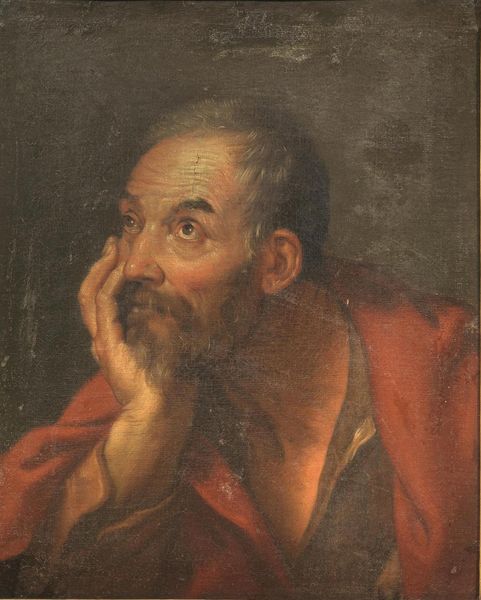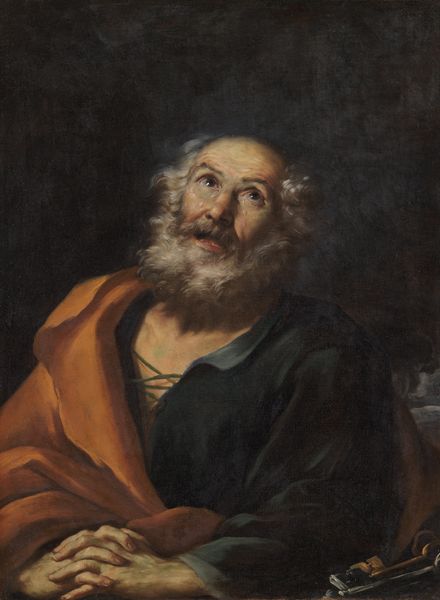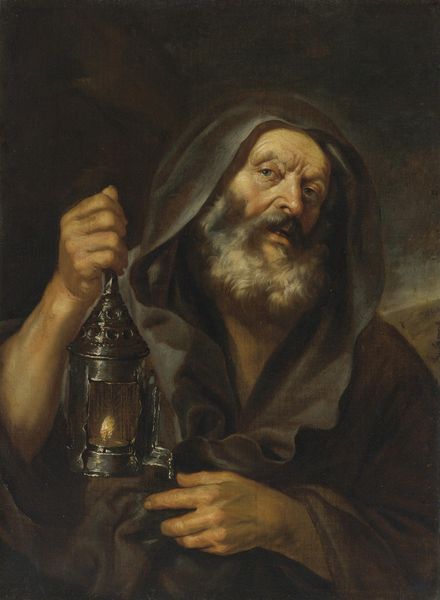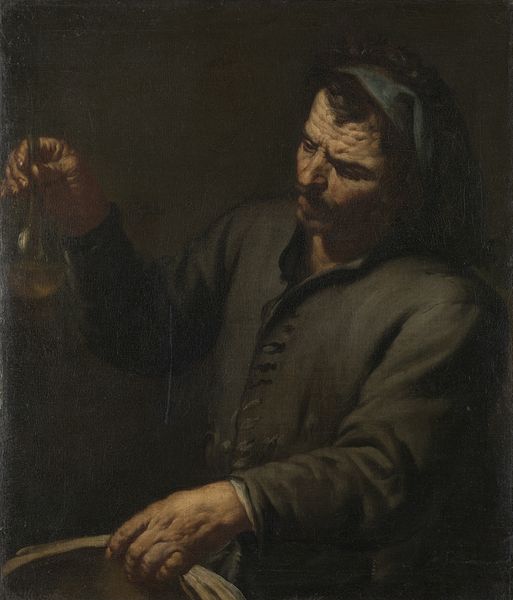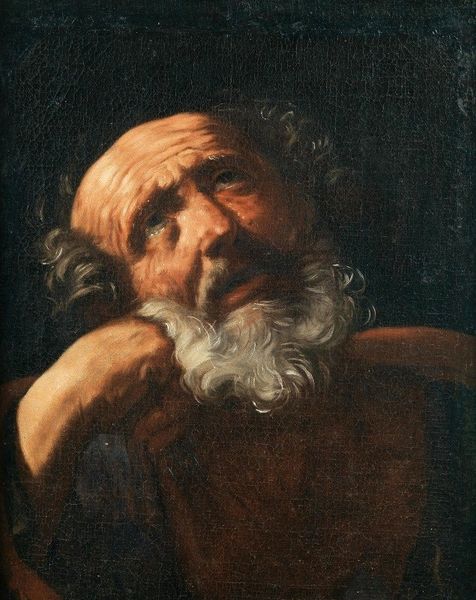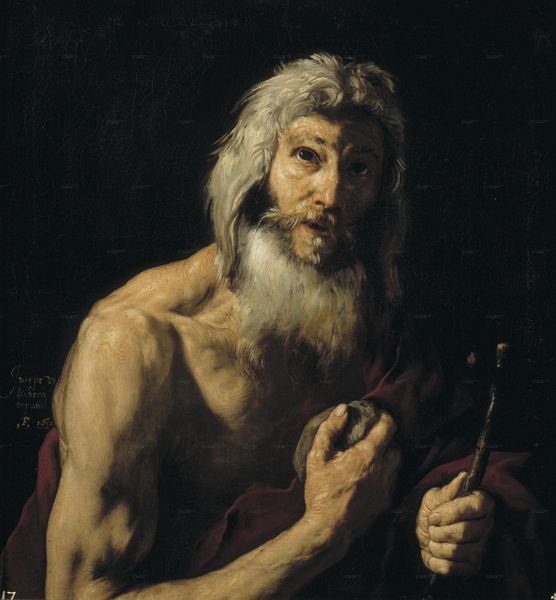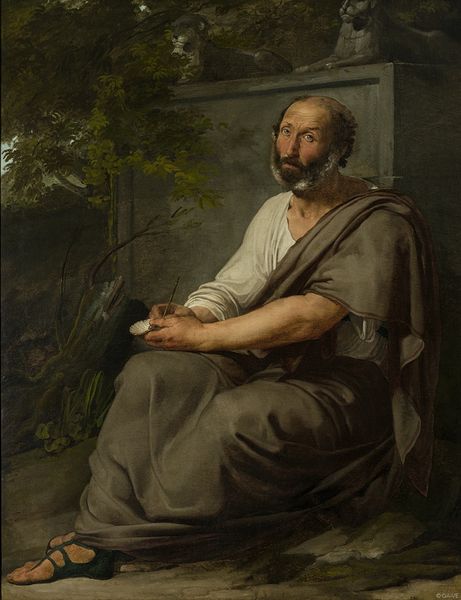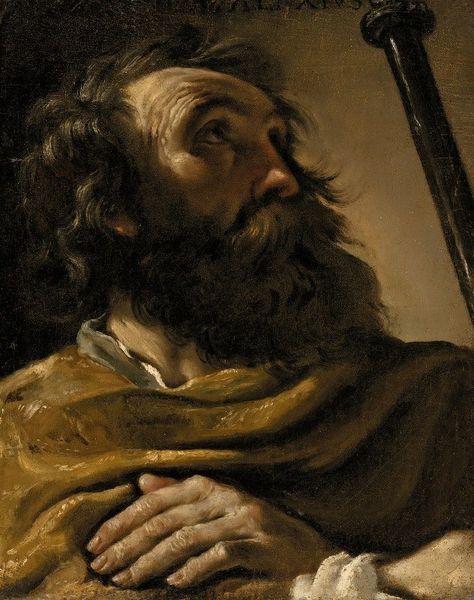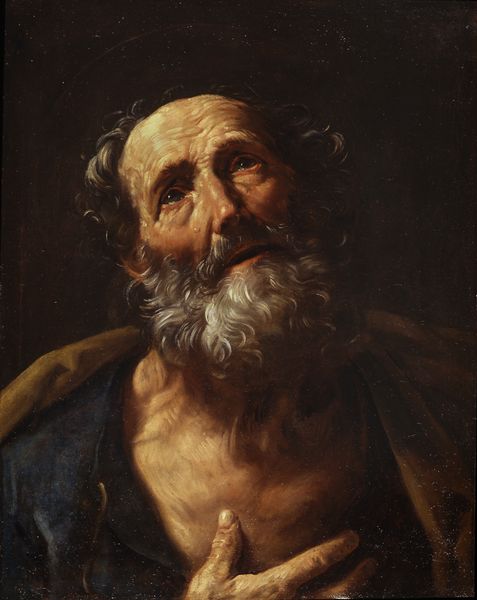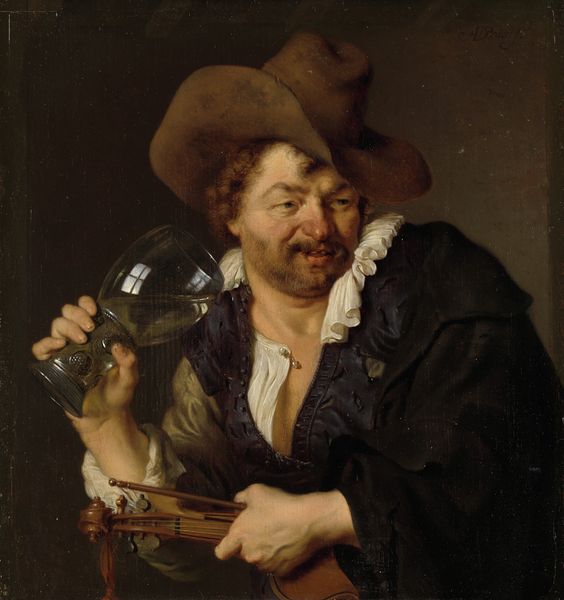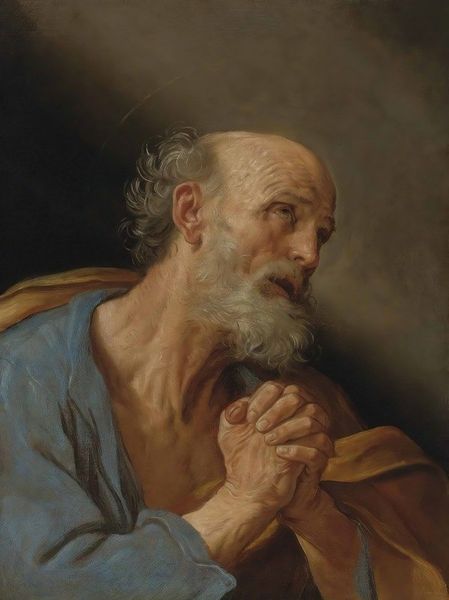
painting, oil-paint
#
portrait
#
baroque
#
dutch-golden-age
#
portrait
#
painting
#
oil-paint
#
figuration
#
vanitas
#
genre-painting
#
realism
Dimensions: height 16 cm, width 12 cm, depth 5 cm
Copyright: Rijks Museum: Open Domain
Curator: Welcome. Let's take a look at Ary de Vois's "A Man with a Gin Bottle," created sometime between 1660 and 1680. What are your initial thoughts? Editor: It’s…melancholy. The dark backdrop and the subject's somewhat downcast expression give it a somber feel. He looks like he's seen some things. Curator: Indeed. De Vois painted during the Dutch Golden Age, a period marked by unprecedented economic growth and cultural flourishing, yet beneath the surface lay anxieties about wealth, morality, and the fleeting nature of life. Editor: Which perhaps explains the 'vanitas' theme. The gin bottle can be seen as a symbol of ephemeral pleasure. Is de Vois critiquing societal excesses here? What social stratum does this man come from? Curator: He comes off as working class; although unlike other works of that era where peasantry are caricatures or stereotypes, here there's an interesting emphasis on realism in his depiction. It could be de Vois is making a statement on the changing social hierarchies. Remember, this was a time of growing social stratification due to mercantilism and colonialism. Editor: So, in essence, it challenges the conventional portrayal of commoners, perhaps suggesting that their experiences and emotions are equally valid and worthy of artistic representation. There’s dignity here despite the setting. What kind of conversations was this painting intended to ignite, I wonder? Curator: Exactly. Paintings like these offered commentary on societal shifts, allowing viewers to ponder issues like social mobility, wealth disparity, and the impact of global trade on the Dutch Republic. It reflects the social consciousness emerging then. Editor: Looking closer, you see his furrowed brow and the slight tremble in his hand holding the bottle...there's a vulnerability that is extremely raw. De Vois invites us to confront uncomfortable truths about human nature and the human condition. I find myself humanized just considering what it must’ve taken for de Vois to present such a figure as this. Curator: It speaks to art's enduring power to connect us across time and challenge our preconceived notions. Editor: Definitely. It highlights art’s role in holding a mirror to society, urging reflection on persistent issues of inequality and human dignity.
Comments
No comments
Be the first to comment and join the conversation on the ultimate creative platform.
